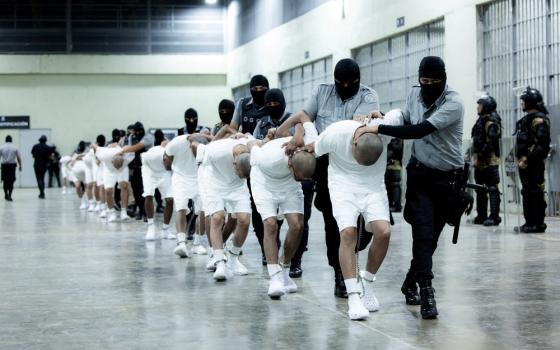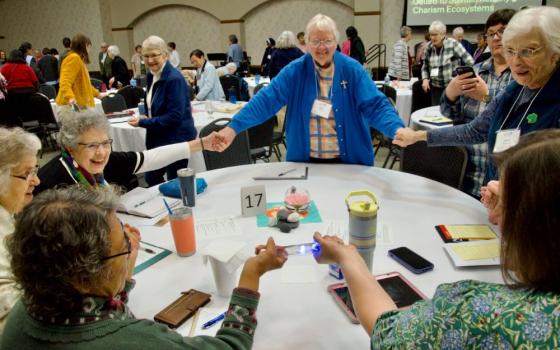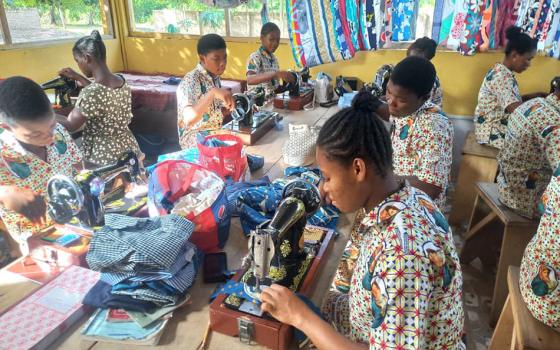By JOHN L. ALLEN JR.
Istanbul
When Pope Benedict XVI meets today with Patriarch Bartholomew I (to give him his full title, “His All Holiness Ecumenical Patriarch Bartholomew, Archbishop of Constantinople and New Rome”), it will mark another stage on the path toward healing the millennium-old rift between Eastern and Western Christianity, an effort that in its modern form dates to the Second Vatican Council (1962-65).
Experts caution, however, that while the symbolism of the encounter is important, it by no means resolves the outstanding issues keeping the two sides apart – above all, differing conceptions of the power of the pope in a reunified Christian family.
The point of reference for the modern rapprochement between Rome and Constantinople is Dec. 7, 1965, and the joint declaration read out that day by Pope Paul VI at the close of Vatican II and by Patriarch Athenagoras I at a special ceremony in Istanbul. That declaration said that both men “regret and remove both from memory and from the midst of the Church the sentences of excommunication” which followed the split between East and West in 1054.
Both pledged to work toward “that full communion of faith, fraternal accord and sacramental life which existed among them during the first thousand years of the life of the Church.”
The declaration provoked criticism from both some Catholic and Orthodox voices. On the Orthodox side, for example, Metropolitan Philaret wrote a letter of protest to Athenagoras warning against excessive accommodation to Rome.
Despite such criticism, however, relations between the Vatican and the Phanar, the headquarters of the Ecumenical Patriarch in Istanbul, have become steadily more systematic. Paul VI visited the Phanar July 25-26, 1967, and John Paul came in late November 1979, on the occasion of the patronal feast of the patriarchate, St. Andrew (the brother of Peter). Each year, a Vatican delegation travels to the Phanar to mark their celebrations.
Those visits have been reciprocated by regular visits of the patriarch to Rome, usually on June 29, the Feast of Sts. Peter and Paul. Patriarch Dimitrios traveled to Rome in 1987, and Bartholomew came in 1995.
In 2004, Bartholomew actually came to Rome twice, once for the normal visit in June, and again in November to receive relics of St. John Chrysostom and of St. Gregory the Theologian [Nazianzus], revered Eastern fathers, which were returned by Pope John Paul II in a gesture of ecumenical sensitivity.
Following the 2004 encounter between John Paul and Bartholomew, the two men issued a joint statement saying, “Our meeting in Rome today also enables us to face certain problems and misunderstandings that have recently surfaced. The long experience of the ‘dialogue of charity’ comes to our aid precisely in these circumstances, so that difficulties can be faced serenely without slowing or clouding our progress on the journey we have undertaken towards full communion in Christ.”
Generally speaking, when the pope and patriarch meet, they co-preside over a liturgy that features profession of faith according to the Nicene-Constantinopolitan Creed in Greek, and at the conclusion, there is a final blessing imparted by both the pope and the patriarch at the Altar of the Confessio. The event stops short, however, of full inter-communion.
Doctrinally, there is relatively little separating Rome and Constantinople. Both recognize the sacraments and ministries of the other, which in theory creates a much more promising base for ecumenical progress than with many churches descended from the Western Reformation.
In reality, however, Catholic/Orthodox relations have long been plagued by problems of a more juridical and political character.
For one thing, the Orthodox harbor deep reservations about the 21 Eastern Rite churches in union with Rome, sometimes called the “Uniate” churches. Discussions in 2004 and 2005 about the possibility of recognizing a patriarch for the 5.5 million-strong Greek Catholic Church in Ukraine, for example, elicited strong protests from Constantinople. In general, many Orthodox fear these churches are a sort of “Trojan horse” designed to siphon off Eastern Christians.
As a sign of the premium that recent popes have placed on good relations with the Orthodox, John Paul II bluntly told Cardinal Lubomyr Husar, head of the Greek Catholic Church, that he would have to wait. Such moves have led to criticism over the years, both from members of the Eastern Churches who sometimes feel their interests are being sacrificed on the altar of ecumenism, and from “ecumenical hawks” who believe the Catholic Church has gone too far in accommodating Orthodox sensitivities.
More basically, the major remaining obstacle to East/West unity has long been differing conceptions over the power and prerogatives of the pope. Although both John Paul II and Benedict XVI have said that they would insist only upon the role played by the Bishop of Rome in the first millennium, a time when East and West were still formally in communion, even that formula leaves many questions unanswered.
In general, many Orthodox Christians say they are prepared to recognize a sort of “primary of honor” for Rome, but Catholics generally insist that the pope would have to exercise real jurisdictional leadership in any unified Christian church.
A joint commission for theological dialogue between Rome and the Orthodox churches was re-launched earlier this year after a six-year hiatus, following 2000 talks in Baltimore which broke down over the question of the Eastern churches. There is little indication, however, that the commission has brokered significant new agreement on the fundamental questions. For that reason, ecumenical observers say, it would be unrealistic to expect any major breakthroughs on this trip.




